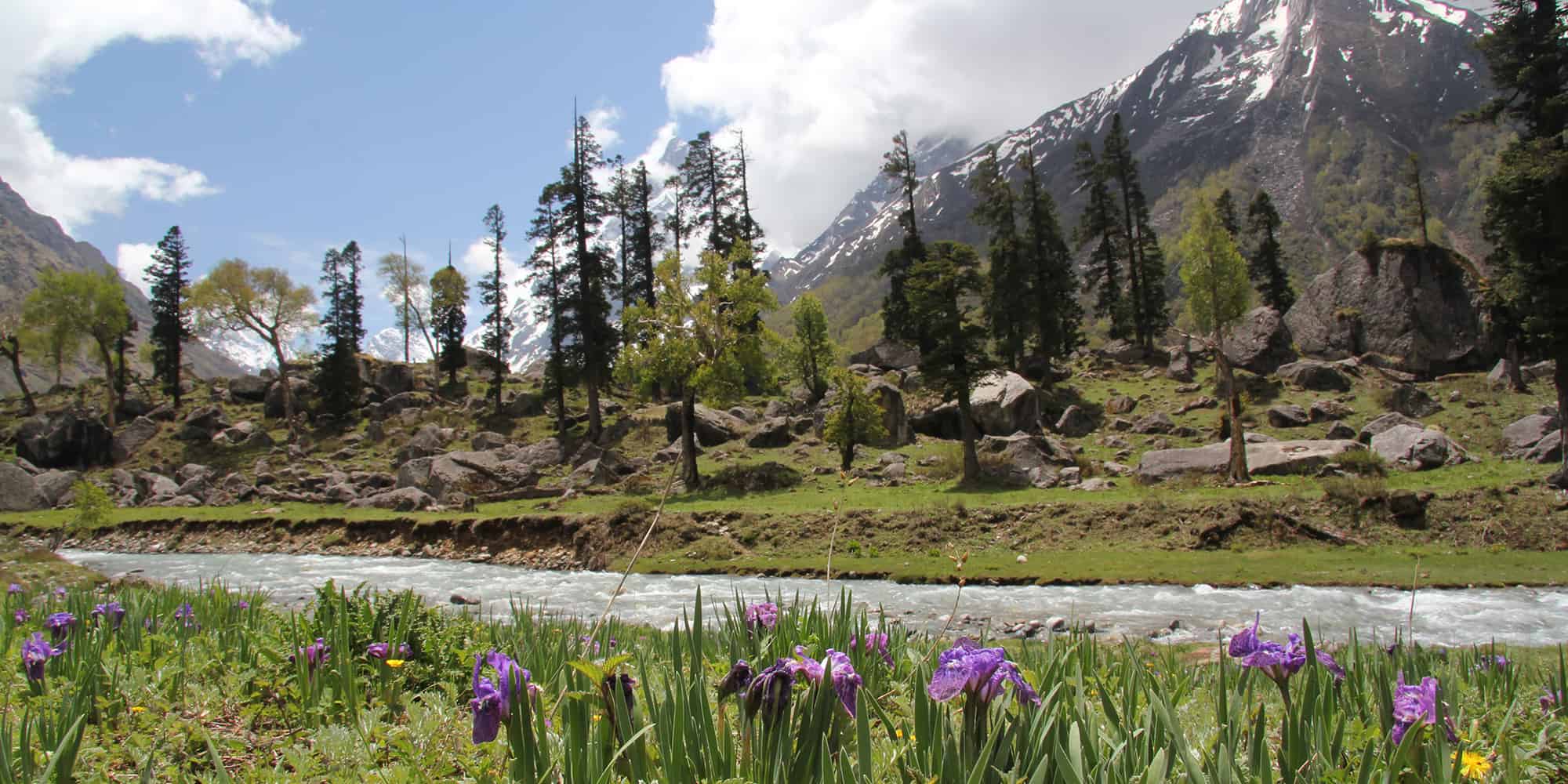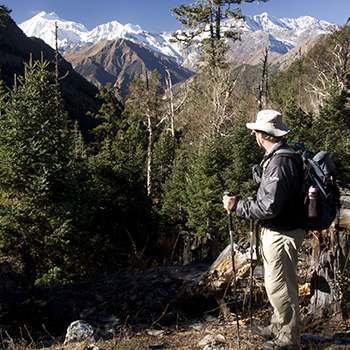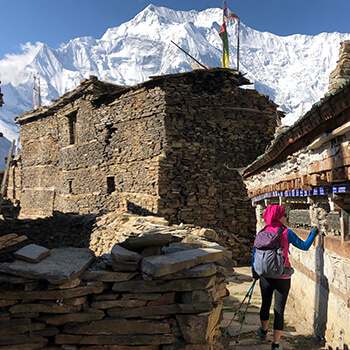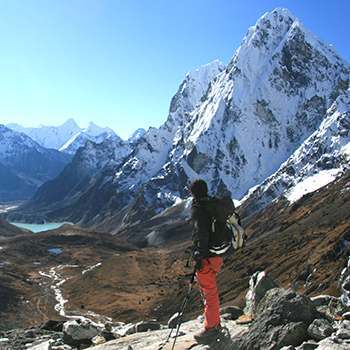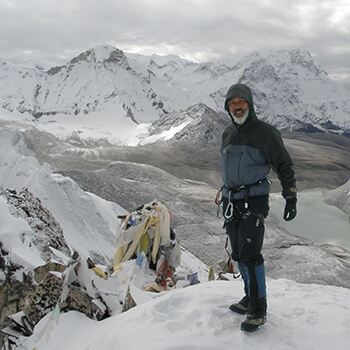Health and Wellbeing
Trekking is good for you! The daily exercise, consumption of significant volumes of water and controlled exposure to sunlight all combine to make many feel healthier than they ever have before. However, there are occasions when this is not the case. So, being aware of your and your group’s health and wellbeing is critical to safe trekking.
Health and Wellbeing is not an exhaustive review of health, first-aid and rescue issues; it is merely a guide to help you understand what information and experience you need to have to trek safely. It is essential that somebody in your party has up-to-date first-aid knowledge. Everyone should have a clear idea of general health problems and prevention, and that your party and guide understand what to do in an emergency situation.
An excellent resource for anyone trekking into mountainous regions is Pocket First Aid and Wilderness Medicine Drs Jim Duff and Peter Gormly (Cicerone Press). Every group should carry at least one copy.
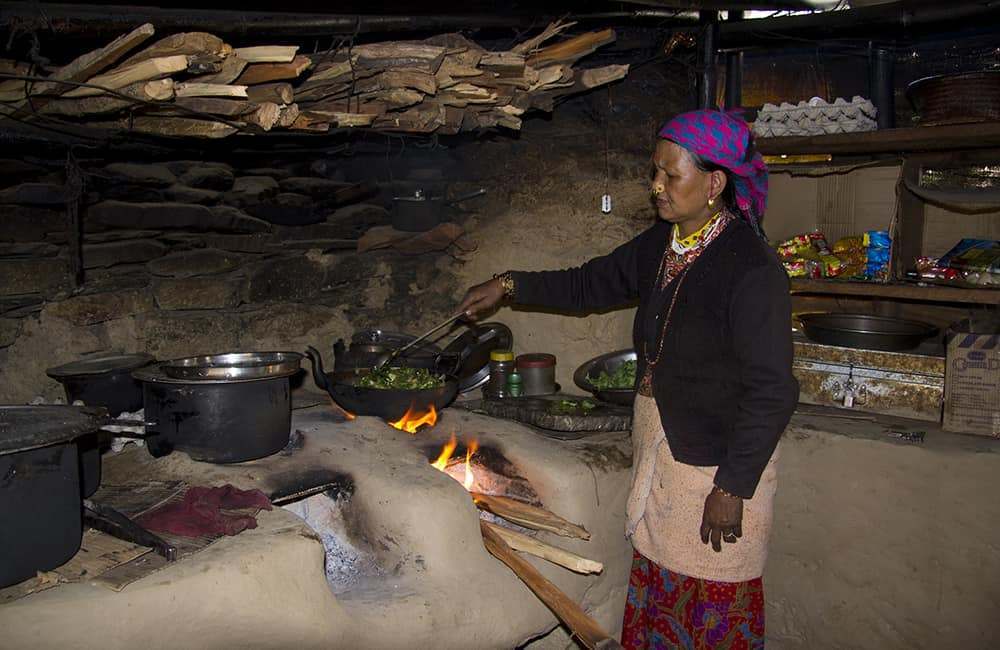
Top Tips
- Use wrap-around, UV A and B lens-protection sunglasses.
- To avoid having to get out of their sleeping bag and tent on a cold night, men can use a pee bottle, but should make sure the lid is water-tight. Wash out with used face-washing water in the mornings.
General Health Issues
All trekking companies and medical staff recommend a regular exercise program of increasing difficulty some months prior to embarking on your trek. If you arrive in Nepal in an unfit state you will find trekking tough on both your body and mind.
Regular aerobic exercise for a couple of hours at a time is the least you should be able to achieve. It is also wise to take at least one long walk a week, for five or six hours (of walking time), so that your body is not unfamiliar with sustained exercise. The fitter you are before you arrive the faster your body will adapt to the rigours of walking all day. It is often hard for people to imagine that you can spend days walking up just one hill and that a climb of 100m or 200m is considered flat in the Himalaya. Aerobic fitness will also make acclimatisation easier for you as your body will begin to adapt to, rather than just coping with, reduced levels of oxygen.
Get a Check Up at Home
You should visit your doctor at home and check your immunisations and any general health requirements or issues. It is also a good idea to get some recommendations about specific medications for your trip and research potential health issues. Whenever you prepare a field first-aid kit there is one major consideration: only pack what you know how to use. Any items or medications that you are not familiar with will at best be a waste of time, at worst, they could cause a serious problem. You should also include enough supplies to cover your crew as well as group members.
Additional Medical Supplies
When you are trekking you will come across health posts in some villages. If you have additional medical supplies these could be a good place to leave them. You should avoid giving out medications to locals unless absolutely necessary and you know exactly what you are doing. It is far better for everyone that you encourage them to visit their health centre as quickly as possible. Sometimes, you may be asked to give medicines to people along the trail or in villages. This is because many locals believe foreign medicines are stronger and more effective than those available locally. If this should happen, ask your guide to explain that your medicines are the same as those prescribed by their local health practitioner. Local people frequently use traditional remedies to cure general ailments, but as you may react to them, it is wise to avoid them.
Insect Repellent
Although malaria is rare in the mountains, mosquitoes and numerous other insects and nasties that bite, including bed bugs, fleas, small spiders, leeches (in the wetter months), horse flies and ticks. Packing both an insect repellent (with DEET) and a bite-balm is a good idea, especially for remoter trips.
Contacts and Eye Care
If you wear contact lenses you will probably find the chance of an eye infection higher than at home, especially on dusty trails. Pack sufficient amounts of sterilising/disinfecting solutions and do not exceed recommended wearing times. Use boiled water that has cooled for cleansing, and remove contacts at the first sign of irritation. The disposable extended-wear lenses tend to perform better than those you change or clean daily.
Pocket First Aid and Wilderness Medicine
There are few first aid and wilderness medicine guides that are more practical for the Himalaya. We strongly recommend that you carry a copy and know it from cover to cover.
Available on Amazon – Pocket First Aid and Wilderness Medicine

Water, Food and Diarrhoea
The supply of plastic bottles of water in the mountains is causing a major environmental problem – see The Impact of Your Trek. Although boiling water is the most reliable method of treating drinking water, it can put a strain on meagre fuel supplies. Taking a back-up water filtration or purification treatment means that you will always be able to quench your thirst. Ultra-violet light (for example Steri-pen®) and chemical treatments tend to be easier to use and lighter to carry than pump systems.
It’s rare that some form of stomach malady doesn’t affect trekkers at some point. So, you should be prepared with a range of medications, see Pocket First Aid and Wilderness Medicine.
Safe Eating
Many travellers to Nepal pick up a stomach bug in Kathmandu and continue to suffer while trekking. It is important that you eat and drink correctly prepared food from the moment you arrive in Nepal and maintain high levels of personal hygiene throughout your trip. However, there are a few general precautions that will make the chances of sudden dashes to the toilet less likely.
- Only eat food that has been freshly prepared, which is normally dhal bhat. Many teahouses are guilty of preparing food hours, or days, in advance, which will certainly cause a stomach upset at least. If you doubt the level of hygiene visit the kitchen and check for yourself before ordering.
- Avoid excessively oily food.
- Keep to regular eating times.
- Increase the amount of vegetables in your diet, even to the extent of avoiding meat altogether when in the mountains.
- Drink plenty of treated water.
- Only consume raw vegetables and fruit if properly treated.
- Be very careful of all roadside restaurants, even if they are busy serving fresh food, as hygiene in these places is frequently very poor.

A typical pack lunch eaten by locals all over the Himalaya is far more nutritious and healthy than chocolate bars and packet noodles.
Altitude Sickness
The effects of altitude are many and various, and still largely a mystery to modern medicine. One year someone may suffer from altitude sickness, but not the next, even if they are doing exactly the same trek at the same time of year. For this reason, the effects of altitude have become the most common dinner conversation in teahouses and dining tents alike.
For a comprehensive review of HAPE, HACE, AMS and related issues see Pocket First Aid and Wilderness Medicine. If someone is beginning to feel unwell then first assumption is always altitude sickness until proven otherwise. A healthy level of observation should exist between all group members. Each trekker should have a ‘health buddy’, normally a tent or roommate, with whom you will form a ‘watch me, watch you’ relationship. Sometimes the first effects of altitude are subtle, eg a slight slurring of speech, or loss of coordination, that only regular examination will notice.
It is essential that all group members take altitude seriously and maintain a vigilant approach and openly discuss how they feel. Self-medication without telling anyone is extremely dangerous. When ascending, most people suffer from some symptoms of altitude sickness, but cautious acclimatisation and continuous vigilance will help to limit the effects you will feel.
Looking After Feet and Joints
Carry a blister-treatment kit and examine your feet regularly for any signs of irritation or nail problems. When you have finished trekking for the day it is a good idea to remove your boots and socks and let your feet ‘breathe’. Some people like a footbath but these are best saved for times when your feet can completely dry out. Trim your toenails regularly and clean out any dead skin from around the nails. If you develop any aches or pains in your feet you should first check that your boots are laced correctly. Also check if your sock or boot lining hasn’t creased or folded differently, or that your laces are not too tight. If pains persist it is wise to rest and seek medical attention.
Legs and joints can frequently feel painful with deep muscle aches lasting for days. Pack a little massage oil and softly apply it to affected areas, if pain persists seek medical attention. If a joint is twisted or sprained first apply something cool: along the main trails this is frequently a chilled bottle of soft drink. Then compress and elevate the joint, make sure the patient is comfortable and relaxed and then give pain and/or anti-inflammatory medication.
See Pocket First Aid and Wilderness Medicine for more information on blister treatment and also easing pain in your legs/joints.
Hypothermia and Heatstroke
Two very common conditions suffered along the trail are hypothermia (aka exposure) and heatstroke, and even mild forms (including dehydration) can significantly reduce your walking performance. See Pocket First Aid and Wilderness Medicine for a comprehensive review of symptoms, diagnosis and treatments.
Hypothermia occurs when your body loses heat faster than it can create it, and is most common in cool to cold conditions during or after periods of high exertion. Typical combinations of factors that cause hypothermia are:
- physical exhaustion,
- wet or insufficient clothing,
- cold and/or wet weather conditions,
- failure to eat enough food,
- dehydration and high altitude.
Ultimately hypothermia can result in death. The patient needs to be warmed immediately, ideally with a hot drink, high-energy food, and hot water bottle next to the skin. They should also be insulated from the weather using a sleeping bag, and/or a blanket/mat wrapped around them.
Heat exhaustion, and the more severe heatstroke, is common at lower altitudes, especially at the beginning or end of a trek. It occurs when your body’s ability to regulate temperature fails, normally in hot and/or humid conditions, especially when you have arrived from a very different climate. Symptoms include dizziness, vagueness, rapid heart rate, and possibly nausea, vomiting and headache. It is best avoided through the regular intake of substantial quantities (up to eight litres a day) of water, salt, resting at the hottest periods of the day and the application of moist scarfs to the head and neck. Rest and avoiding vigorous exercise for a few days is the best method of recuperation.
First Aid
A comprehensive first-aid kit suitable to cater for the needs of your party is essential. It should be kept available throughout the day and not packed away in a porter’s load that will not be seen again until camp. There are two components to most first-aid kits: medications and dressings.
For a comprehensive and explanation see Pocket First Aid and Wilderness Medicine and remember to keep your first-aid skills updated through regular training. It is also a good idea to have a small subsidiary first-aid kit with the person responsible for your crew during the day.
General Safety Tips
-
Beware of Altitude Sickness:
Use the buddy system to watch for symptoms of altitude sickness. Make sure everyone remains fully hydrated by drinking water throughout the day, every day. Stay together along the trail and communicate frequently with everyone.
-
Be Safe:
Carry an extensive first-aid kit and know how to use it. Have multiple plans for emergency evacuation and designated decision makers. Leave your itinerary details with someone responsible at home.
-
Be Self-Reliant:
Don’t assume you will receive help or assistance. Ensure your group has extensive field-craft and navigation skills. Research thoroughly: is your route appropriate for your party? Do you have the necessary skills, experience, resources and equipment?
-
Remain Hydrated:
Drinking between two and four litres of water per day will help prevent altitude sickness and improve your body’s recovery time.
-
Don’t Rush:
There are no prizes for coming first on the trail and rushing will probably over-stress your body and may increase your chances of suffering from altitude sickness. Frequent stops to drink water and rest often become photo opportunities and a chance to chat with locals.
-
Trekking Poles:
That more people aren’t impaled by absent-minded trekkers swinging their poles is amazing. Be aware of the pole tips, especially when crossing bridges or negotiating narrow or steep trails.
-
Beware of Yaks:
Many porterage animals you meet along the trail are yaks or hybrids of yaks and cattle, and all of them can be dangerous. Every season at least one tourist will die because they got too close to the large horns or were knocked from a bridge. If you see any pack animals (even donkeys cause accidents) coming along the trail you should scramble up the hillside of the trail and wait until they pass.
-
iPod Use:
Rather than listening to the noise of life along the trail some people prefer to plug in to an iPod. Doing so puts you at greater risk from animals and rockfall.
-
Common Courtesy:
The trail is often busy, especially at steep or difficult sections. A common courtesy is to give way to people walking uphill, or to those who are obviously struggling or carrying a very large load.
Great that you’ve got a handle on looking after yourself!
But what if something does go wrong? Being prepared also includes knowing what and how to handle things when emergencies happen…



